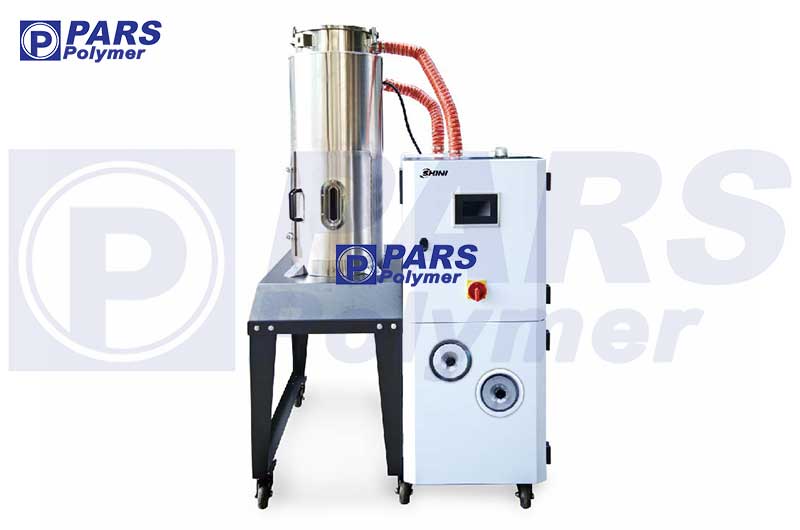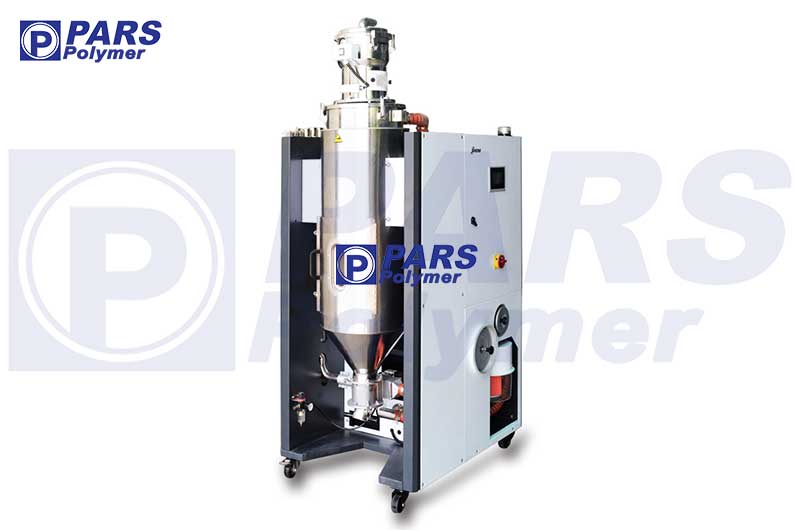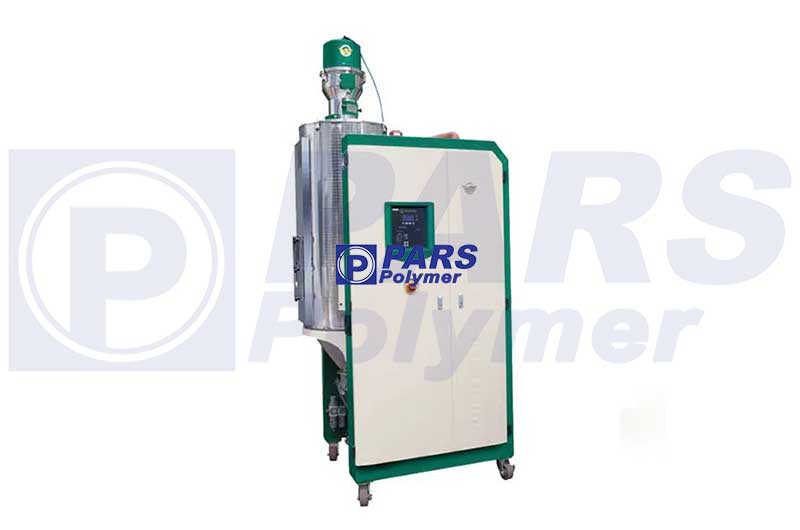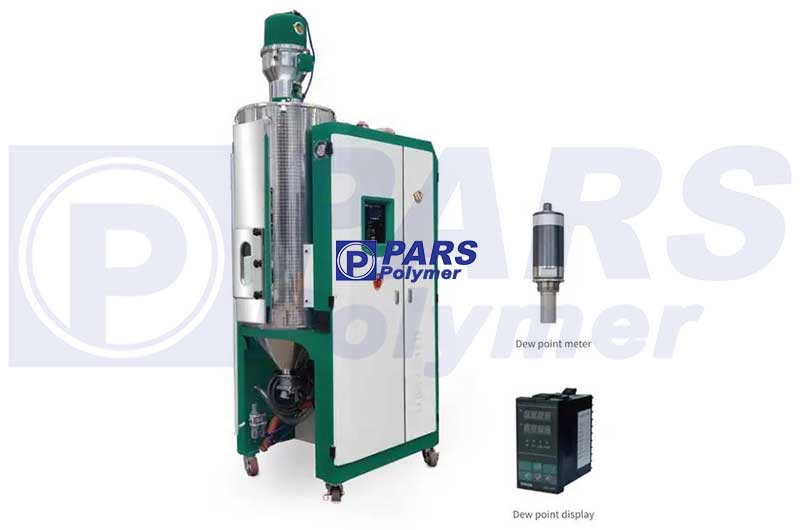Most of the basic plastic materials look dry in appearance. However, not everything is always as it seems. Hygroscopic materials such as polycarbonate, nylon and PET absorb moisture from the surrounding air. Therefore, although they look dry, they will still contain some moisture by the time they reach the processor and require a plastic dehumidifier and degasser. During processing, a chemical reaction (hydrolysis) takes place that shortens long polymer chains. Long polymer chains are required to produce a good product. Short chains cause poor quality molding.

Manufacturers of plastic products try to process raw materials that do not contain moisture to improve properties, such as product quality in terms of strength and appearance.
It should also be taken into account that excessive drying of the material, for a long time or at very high temperatures, also causes damage to the polymer. If color pigments are used during drying and too long a dwell time in the drying process can cause discoloration and potentially cause darkening.
So, what options are there for plastic processors to ensure that their raw materials are in optimal condition for processing?
Plastic dehumidifier and degasser
Desiccant dryers are designed to remove moisture from plastic materials before processing. The air is intensively dried through a drying bed. Then this air is heated to a certain temperature and enters into the drying funnel containing the materials to be dried. This hot and dry air removes moisture from the material. The saturated air is then drawn out of the dryer hopper and recirculated through the dryer bed to remove moisture before starting the cycle again. This dryer has a limited ability to hold moisture before needing regeneration (drying). Typically, plastic processors use regenerative dryers or twin towers, in which, when the drying bed reaches its moisture holding capacity, the air flow is automatically switched to the second drying bed to continue the drying process. At the same time, the first desiccant bed is regenerated by heating to remove moisture, allowed to cool, and then ready to absorb moisture again.

Rotary dehumidifier
Rotary dehumidifiers are designed to address the energy and revenue drain issues of other types of drying. When the air flow is switched to the second drying bed, the dew point starts low again. Dew point control is a dehumidifier design feature that allows the user to select and maintain the appropriate dew point for the material being processed. This is a very useful feature as it practically eliminates over-drying.
Some rotary dehumidifier models can save up to 40% in energy consumption compared to the most efficient twin dryers due to lower regeneration temperatures. This number depends on the manufacturer of the dehumidifier.
Rotary dehumidifiers use a rotary motion that keeps the dryer in continuous service due to its ability to regenerate the desiccant saturated with moisture in the same cycle. While the desiccant bed used in traditional dehumidifier dryers contains desiccant granules that break down, rotary dryers use about 3 times the amount of pure desiccant.
The drying beds in twin tower dehumidifier dryers are regenerated at 320°C, but in the rotor dryer it is 140°, which saves energy. They do not use cold water and do not require compressed air.
Advantages of using dehumidifiers
Reduce drying time
To shorten the drying time, the temperature of the air used for drying can be increased. The hotter the material to be dried, the more efficient and faster the drying process will be by increasing the vapor pressure in the wet material. A small increase in temperature of 10°C can cut the drying time in half in some cases. The combination of plastic housing and heat is a very efficient method of drying wet materials.
Gasifier of plastic materials
The degasser of plastic materials, like the dehumidifier, does the job of drying the plastic and removing the moisture from it. A plastic material degasser can usually remove about 0.06 cubic meters of moist air from one kilogram of polymer.
Plastic materials such as PP, PE do not absorb moisture and moisture is only placed on their surface. You can blow hot air on them and dry them by using gasifier.
This device is used only to dehumidify the raw materials of production parts.
Air bubbles, shrinkage, cracking, and lack of transparency are caused by the fact that plastic materials are not moisture tested and completely dried before molding.
Characteristics of moisture-absorbing and gas-absorbing plastic
Equipped with microprocessor with temperature control P.I.D
Equipped with LCD screen and keyboard
Easy to use with warning messages
Two condensers provide low return air temperature and dew point below -40°C (-50°C with chilled water)

Advantages of plastic dehumidifier
Moisture holes are removed from the plastic and the original shape of the plastic is preserved.
The plastic gasification process can prevent defects such as spots or delamination of the plastic surface.
By gassing plastic in some polymers, it is possible to increase their resistance to impact and tension.
Buying all kinds of dehumidifiers and plastic degassers
Dehumidifiers and gas dehumidifiers of plastic injection plastic and inflatable plastic can have many different capabilities according to the customer’s needs. Accordingly, we recommend that you contact our sales experts for technical advice and price inquiries so that the most suitable device for your production can be introduced.
